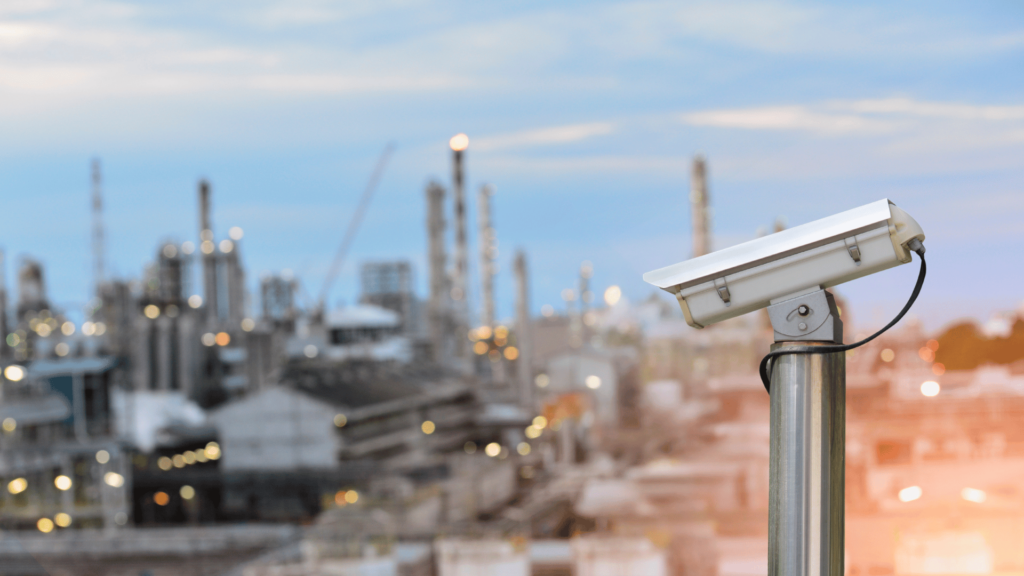How to Select the Right Explosion-Proof Cameras for flammable environments
Explosion-proof cameras for flammable environments are essential for ensuring safety and reliable surveillance in high-risk industrial settings such as oil refineries, chemical plants, and mining facilities. In these environments, ordinary cameras simply won’t suffice.
This guide is specifically designed for safety engineers and facility managers who need to select the right explosion-proof cameras for flammable environments, cameras that comply with rigorous safety standards while providing dependable performance when it matters most.
Why Standard Cameras Aren’t Safe in Flammable Environments
In areas where explosive gases or combustible dust may be present, traditional cameras can be dangerous. A single electrical spark could trigger a catastrophic incident.
That’s where Veilux explosion-proof cameras come in. These systems are specially designed to contain internal sparks or heat, preventing ignition of flammable materials in the surrounding atmosphere.
Step-by-Step: How to Choose the Right Explosion-Proof Cameras for flammable environments
✅1. Check for Certified Safety Standards
For flammable environments, your first priority is ensuring compliance. Veilux cameras carry globally recognized certifications:
- ATEX and IECEx for international standards
- UL/CSA for North America
- Rated for Class I, Division 1 & 2 or Zone 1/Zone 2 hazardous areas
These ensure the camera has been rigorously tested to operate safely in explosive environments.
✅2. Choose Durable, Corrosion-Resistant Materials
Cameras in these zones must withstand tough physical conditions. Veilux uses 316L stainless steel and IP68-rated housings that resist:
- Corrosion from chemicals or saltwater
- Extreme heat or cold
- Water, dust, and physical impact (IK10 rating)
This rugged build ensures a long service life with minimal maintenance.
✅3. Look for High-Performance Imaging
Poor visibility can lead to missed safety events. Veilux cameras are designed for mission-critical clarity, with features like:
- HD and 4K resolution
- IR night vision and thermal options
- WDR (Wide Dynamic Range) for shadows and glare
- PTZ (pan-tilt-zoom) for wide coverage with precision
This helps safety engineers monitor operations, detect anomalies, and investigate incidents day or night.
✅4. Ensure Easy System Integration
Veilux explosion-proof cameras are IP-based and compatible with ONVIF standards. They work seamlessly with:
- Existing VMS platforms
- NVRs and cloud systems
- PoE networks for easy power and data transmission
You won’t need to overhaul your infrastructure, just plug and protect.
✅5. Ask About Support and Customization
Every site is different. Veilux offers support to configure systems for your specific needs, with options like:
- Custom mounts and brackets
- Sun/rain shields
- Wiper systems and lens heaters
Their team understands hazardous environments and helps you build the right solution.
🛠️ Download the Free Technical Selection Guide
Want help choosing the right model? Our Explosion-Proof Camera Technical Guide
👉 Download the Technical Selection Guide
Whether you’re overseeing compliance, system design, or safety upgrades, this guide is your go-to resource.
Final Thoughts
As a safety engineer, choosing the right surveillance system isn’t just about video, it’s about preventing disaster. By selecting certified, rugged, and reliable explosion-proof cameras for flammable environments, you protect lives, equipment, and operations.
Veilux has built its reputation on delivering just that, trusted surveillance built for the toughest environments.
Need help with site planning or custom recommendations? Our experts are here to assist.
External Resource (Dofollow Link):
For a deeper understanding of explosion-proof equipment classifications, refer to this NIOSH Guide to Hazardous Locations
published by the CDC.

